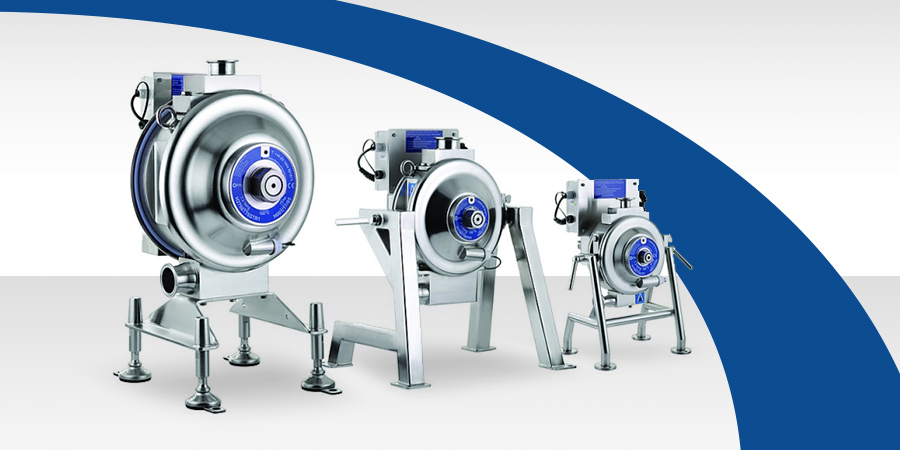Pumping High Viscosity Liquids With An AODD Pump
Very often it is the pipework on an application that is the deciding factor when it comes to pumping high viscosity liquids with any pump – An Air Operated Double Diaphragm Pump (or AODD Pump) is no different.
TIPS FOR PUMPING HIGH VISCOSITY LIQUIDS
- Run the pump slowly, especially when starting / priming the pump.
- Select a pump that is 'oversized' for the application and run it slowly
- Use a Soft Start on start up.
- Use large smooth bored suction pipework; and keep the pipework as short and straight as possible.
- If using flexible pipework use a rigid or semi-rigid design, to stop the pipework distorting under vacuum.
- Keep the Delivery Pipework as short and straight as possible, and use large bore pipework where possible.
- If possible; warm up the liquid - increasing the temperature of a liquid will normally lower the viscosity
- If possible; pressurizing the container holding the product with Nitrogen or Compressed Air will help push the product into the pump.
- Consider using a Drum Unloading System if the viscosity or flow rates require it.

CAN WE PUMP IT.
With a Basic Pump / Lance in a Barrel Set Up
- Does the liquid flow to the bottom of the lance (Inlet)?
- Yes – Then we can assume that atmospheric pressure acting on the top of the liquid is enough to push the liquid into the lance.
- No – then we can assume that atmospheric pressure is not strong enough to move the liquid to the lance inlet
- The Lance will basically ‘dig itself’ a hole in the liquid.
- If the viscosity is borderline - The lance can be moved around in the barrel to ‘chase’ the liquid or the liquid can manually pushed to the lance inlet.
With a Basic Pump / bottom connection to IBC
- Does the liquid flow out of the outlet valve on the IBC if you open it?
- Yes – Then we can assume that atmospheric pressure acting on the top of the liquid is enough to push the liquid into the outlet pipework.
- No – then we can assume that atmospheric pressure is not strong enough to move the liquid into the outlet pipework.
- You can help the liquid by applying air pressure onto the liquid to help it fill the outlet pipework (Care needs to be taken charging IBC / Containers)
GETTING THE LIQUID INTO THE PIPEWORK CONNECTED TO THE PUMP IS ONLY THE START.
Now we have to overcome any friction losses in the pipework before it gets to the pump and once it leaves the pump.
The friction losses need to be calculated for the specific pipework on the application. Contact Flotronic Pumps for help with this.
YOU WILL NEED:
- Viscosity in Cps
- Suction Pipework – Length and Internal Diameter
- Delivery Pipework – Length and Internal Diameter
It is always advised to keep the suction pipework as short and straight as possible while using pipework with a minimum internal diameter equal to the pump inlet.
Viscosity of up to 150,000Cps are possible with Standard Flotronic AODD Pumps. For High Viscosity we also have a Drum Unloading System which combines our proven Sanitary Style Slimline 316L Pump with our drum unloading system. Using our Inflatable seal and follower plate we are able to remove up to 98% of the product from the barrel.
Follower plate arrangements are available for all barrel sizes, metal, plastic and cardboard.
THE BASICS
The thing to remember is that all positive displacement pumps work in the same basic way:
- The internal parts of the AODD pump make a space that is open to atmosphere
- This space is connected to atmosphere through a connection / pipework.
- Atmospheric pressure attempts to fill the space with air to equalize to 1bar atmospheric.
- If there is any liquid between atmospheric pressure and the space made by the pump internals; atmospheric pressure will attempt to push that liquid into the space provided.
- The internal parts of the pump then take control of what ever is in the space (Air or Liquid) and push it out of the pump.
- The only thing causing the pump to be filled with liquid is the 1 Bar atmospheric pressure available.
In the case of an AODD Pump; one diaphragm is moving away from it’s wet dish making a space for liquid to be pushed into it via a check valve, while it’s opposite second diaphragm is moving towards it’s wet dish forcing liquid out of the pump via a check valve.
If you need any advice on pumping High Viscosity, please contact our support team on support@flotronicpumps.com




